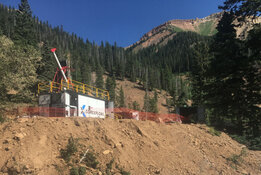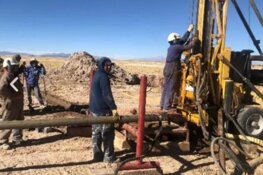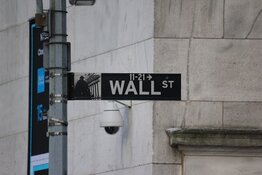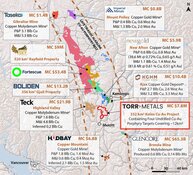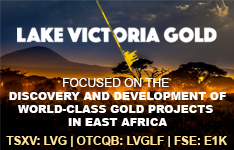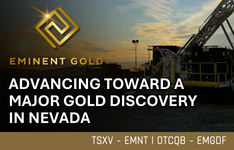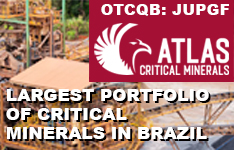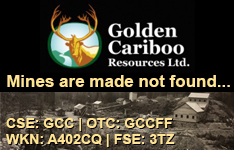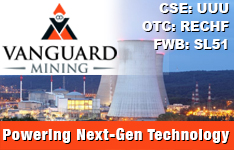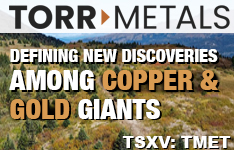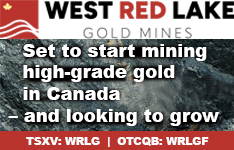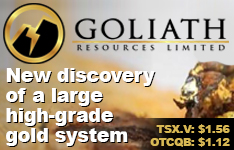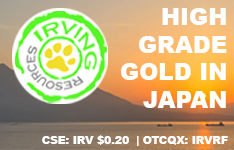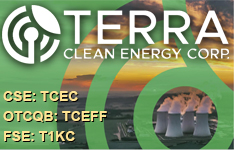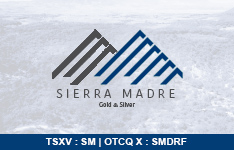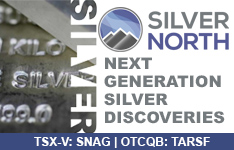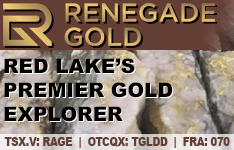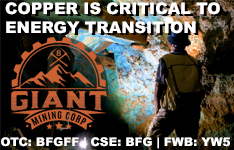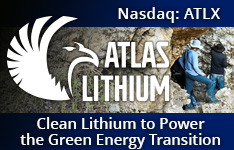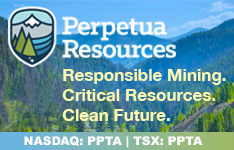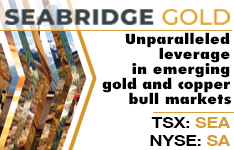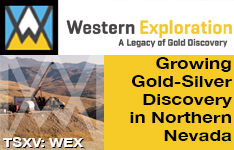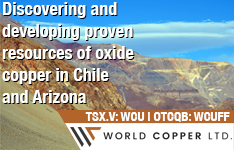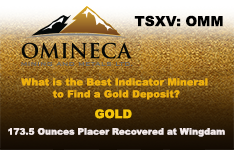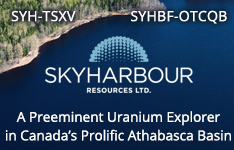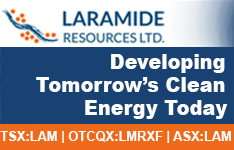The global rare earths market in 2025 continued to shift under the pressure of geopolitical tensions, demand from electric vehicles and clean energy technologies, and efforts to localize and secure critical supply chains. Rare earth elements (REEs), a group of 17 metals essential to producing permanent magnets used in electric motors, wind turbines, electronics, and defense systems, remained strategically significant across industries.
The year began with renewed concern over global supply stability. According to an August 14 report from Investing News, China's Announcement 18 introduced sweeping export controls on key medium and heavy REEs, including terbium, dysprosium, and gadolinium, as well as permanent magnet technologies. These measures prompted the United States to reexamine its critical minerals supply chain for national security reasons. To mitigate the impact, China later introduced a "green channel" to expedite export licenses for certain firms, particularly those supplying the European auto industry and U.S. manufacturers like General Motors and Ford.
At the same time, the U.S. government increased support for domestic production. In July, the Department of Defense committed US$400 million to MP Materials Corp. (MP:NYSE) to expand processing capabilities at its California-based Mountain Pass mine and to help construct a second magnet manufacturing facility. A few days later, Apple announced a US$500 million deal with MP to supply rare earth magnets for its devices using 100% recycled materials. Investing News reported that the agreement aligned with broader efforts to secure a domestic source of rare earths for high-tech applications.
Market growth forecasts have remained strong. According to Persistence Market Research, the rare earth elements market was valued at US$7.2 billion in 2025 and projected to reach US$14.7 billion by 2032, supported by a 10.6% compound annual growth rate. Permanent magnets accounted for the largest application share, with particular emphasis on neodymium and praseodymium for electric vehicles and wind power systems.
Geographic diversification remained a priority. Asia Pacific continued to dominate production and demand, with China accounting for approximately 70% of rare earth output, 85% of processing capacity, and 90% of magnet manufacturing. Precedence Research noted that the Asia Pacific held an 87% share of the global rare earth metals market in 2024, and China continued to consolidate control through mining expansions and technology restrictions.
In Europe, governments sought to reduce import reliance. According to Persistence Market Research, Sweden's LKAB launched a new rare earth oxide project in Lulea, expected to supply up to 18% of Europe's future demand. In North America, defense needs further fuel demand. CNBC reported in October that the U.S. Department of Defense was accelerating plans to stockpile US$1 billion in critical minerals. JPMorgan Chase also committed up to US$10 billion in investments across sectors tied to U.S. national security, including rare earths.
Recycling gained momentum as a secondary source of supply. The report noted that rare earth recycling remains below 1% globally, though companies like Cyclic Materials, backed by Jaguar Land Rover and Microsoft, are working to build circular supply chains. Persistence added that recycling initiatives have the potential to reduce environmental impact and increase sourcing stability.
Despite these developments, China's influence remained central to pricing and supply. Precedence Research highlighted that China's stockpiling, export controls, and expanding global partnerships continued to shape the market. Meanwhile, volatility in prices, especially for heavy REEs like terbium, remained a challenge. CNBC reported that trade disputes between the U.S. and China caused rare earth stock prices to surge in October following new tariff threats.
Overall, the rare earths market in 2025 reflected a global push to balance growing industrial demand with strategic efforts to diversify supply, increase domestic production, and enhance recycling, all while managing the economic and political implications of China's dominant position in the sector.
China's Expanded Export Controls Reshape Global Rare Earth Trade
In October 2025, China introduced a sweeping series of new export controls on rare earth elements and magnet-related technologies, significantly altering the landscape for global supply chains. According to the Chinese Ministry of Commerce's official Notice No. 61, the new rules require export licenses not only for raw rare earth materials but also for foreign-manufactured products that contain trace amounts of Chinese-origin rare earths or use Chinese extraction or magnet-making technologies. The licensing framework applies to goods with as little as 0.1% Chinese-sourced content, including products manufactured outside China.
On October 10, Chatham House emphasized that these measures grant Beijing leverage over a wide range of dual-use technologies, particularly those used in defense applications, and reinforce China's role as a gatekeeper for critical inputs. The controls come amid a broader context of China's dominance in global manufacturing. UNIDO projections cited by Chatham House forecast that China will account for 45% of global manufacturing value added by 2030, up from 29% in 2023.
CNBC reported on October 14 that U.S. rare earth stocks surged following President Donald Trump's threat to impose 100% tariffs on China in response to its tightened export controls on critical minerals. The announcement contributed to sharp gains across the sector, with companies like MP Materials seeing double-digit increases. Although the president later moderated his comments, the episode highlighted market sensitivity to trade policy and reinforced broader efforts to secure domestic sources. The same report noted that JPMorgan Chase committed up to US$10 billion to industries deemed vital to national security, including critical minerals, while the Defense Department continued accelerating its plans to stockpile US$1 billion in essential materials.
Newsweek on October 16 reported that U.S. President Donald Trump viewed the new restrictions as a violation of a previous trade agreement and responded by threatening 100% tariffs on Chinese imports. China clarified that the controls were not an outright ban, but a "legitimate measure" to prevent the unauthorized military use of rare earth materials. A spokesperson stated that exports for civilian use would still be approved under licensing.
These developments mark a continuation of what the Center for Strategic and International Studies (CSIS) described as China's most consequential rare earth policy to date. The new rules extend to permanent magnets, semiconductor-related materials, and military applications, with license applications for defense-related uses expected to be denied outright. The measures also prohibit Chinese nationals from engaging in overseas rare earth ventures without prior government authorization, tightening control over both materials and technical expertise.
The regulatory shift has had geopolitical ramifications. According to CNBC, the Chinese government defended its position by accusing the U.S. of applying double standards and reiterated that the controls align with international norms. Officials stated they were "not afraid of a trade war," highlighting the strategic intent behind the restrictions. At the same time, tensions have escalated as Beijing's licensing backlog has slowed rare earth shipments, raising concerns within the European Chamber of Commerce in China.
Beyond the trade conflict, CNBC's CFO Council noted that the move reflects a broader "lawfare" strategy, with China using legal tools to assert control over global supply chains. The restrictions function similarly to the U.S. Foreign Direct Product Rule, applying extraterritorially to products made outside China. As global companies navigate the overlap between Chinese and Western legal regimes, concerns have grown about compliance risks and regulatory uncertainty.
Two companies have emerged in the rare earths sector, each pursuing vertically integrated strategies to strengthen mine‑to‑magnet supply chains in regions outside China.
Atlas Critical Minerals Corp.
Atlas Critical Minerals Corp. (JUPGF:OTCQB) has reported positive technical results from two rare earth element (REE) projects in Brazil, highlighting its growing role in the critical minerals supply chain. The company is advancing the Iporá Ionic Clay Project in Goiás State and the Alto do Paranaíba Project in Minas Gerais, both located in established mining jurisdictions with road, power, and water infrastructure.
 Streetwise Ownership Overview*
Streetwise Ownership Overview*
Atlas Critical Minerals Corp. (JUPGF:OTCQB)
At the Iporá Project, Atlas confirmed high-grade mineralization with intercepts including 8 meters at 2,071 parts per million (ppm) total rare earth oxides (TREO) and a one-meter peak of 3,822 ppm TREO. Recovery rates were particularly strong for magnetic rare earth oxides (MREO), which surpassed 60%. The company also noted 55% recovery for heavy rare earth oxides (HREO) and 63% for yttrium, materials that are critical in the production of permanent magnets used in clean energy and defense technologies.
The Alto do Paranaíba Project returned even higher grades, with results reaching up to 28,870 ppm TREO. Mineralization was consistent across all blocks and showed a strong correlation with titanium, raising the potential for co-product recovery. Combined, the two deposits offer a dual-resource strategy encompassing both ionic clay and conglomerate-hosted REE systems — two different deposit types that may allow for flexible development sequencing and processing approaches.
The company is 28%-owned by U.S.-listed lithium developer, Atlas Lithium Corp. (ATLX:NASDAQ), which views the rare earth and other critical minerals as complementary to its flagship lithium project. Atlas Lithium's CEO emphasized the geological potential of the Brazilian portfolio and pointed to rare earths, titanium, graphite, and uranium interests spread across more than 218,000 hectares.
Analyst coverage of Atlas Lithium has remained favorable, with a focus on its cost discipline and alignment with the energy transition. In a July 14 research note, H.C. Wainwright & Co. analyst Heiko Ihle reaffirmed a Buy rating and named the company a "Top Pick for 2025," citing a potential 349% upside to a US$18 price target. Ihle highlighted its low-cost lithium operations, at US$489 per ton of concentrate, and noted US$80 million in combined offtake and investment agreements. He also emphasized that the rare earths subsidiary complements the flagship lithium project, adding, "we expect the near-term cash flow to support Atlas' long-term strategy of becoming a leading player in global energy transition."
Alliance Global Partners analyst Jake Sekelsky echoed the positive sentiment in an August 5 update, reiterating a Buy rating and assigning a US$20 price target. Sekelsky described the company's recent Definitive Feasibility Study as "an inflection point on the road to lithium production," projecting a US$540 million after-tax net present value and a 145% internal rate of return based on a US$1,700 per ton SC5.5 price. Even at a lower price assumption of US$1,200 per ton, the NPV stood at US$260 million — more than double the enterprise value at the time. He noted the limited remaining capex and described the modular design as offering flexibility for future expansion.
The Iporá Project is located near Serra Verde, one of the few integrated rare earth mining and processing operations outside Asia, while Alto do Paranaíba sits in a region known for its mining infrastructure and port access. Together, the two projects support Atlas Critical Minerals' positioning in Brazil's emerging rare earth sector and underscore the broader shift toward Western-aligned supply chains for critical materials.
According to Atlas Lithium, its management and insiders own about 27% of the company's shares. Strategic partners, including Mitsui & Co., hold another roughly 10%. Institutional investors own about 10%. The rest is in retail.
Refinitiv reports that Atlas Lithium has 20.54M outstanding shares. Its market cap is ~US$120M. Its 52-week range is US$3.54–US$11.89 per share.
In terms of Atlas Critical Minerals, according to the company, about ~32% is owned by insiders and management.
~28% is held by Atlas Lithium. The rest is institutions and retail.
Its market cap is ~US$81 million with 41.6 million shares outstanding. It trades in a 52-week range of US$0.40 and US$3.93.
Energy Fuels Inc.
Energy Fuels Inc. (EFR:TSX; UUUU:NYSE.American) is a U.S.-based producer of uranium with additional operations in rare earth elements (REEs) and heavy mineral sands. The company owns the White Mesa Mill in Utah, its core processing asset, and operates ISR (in-situ recovery) and conventional uranium projects. According to company data, it has more than 11.5 million pounds of annual uranium production capacity, with multiple standby mines ready for advancement as needed.
 Streetwise Ownership Overview*
Streetwise Ownership Overview*
Energy Fuels Inc. (EFR:TSX; UUUU:NYSE.American)
In 2025, Energy Fuels expanded its rare earth portfolio, reporting pilot-scale dysprosium oxide production at 99.9% purity and planning to scale up heavy REE separation by late 2026. The company also commissioned a light REE circuit for neodymium-praseodymium oxide and maintained active uranium output from its Pinyon Plain and La Sal complexes. As of mid-2025, it held over US$250 million in working capital and no debt.
Analyst coverage of Energy Fuels Inc. in 2025 reflected both optimism around the company's rare earth transition and caution regarding near-term execution.
On January 19, Christopher Ecclestone of Hallgarten & Company initiated coverage with a "Long" strategy and a 12-month target price of US$11.50, representing 121% upside from the US$5.21 share price at the time. He highlighted the company's move into rare earth elements and heavy mineral sands, describing the White Mesa Mill as the "epicentre of change" and noting Energy Fuels' strong balance sheet with US$183 million in working capital as of September 2024.
On August 8, David A. Talbot of Red Cloud Securities reiterated a "Buy" rating and raised his target from CA$16.50 to CA$17.00. He pointed to improving Q2 performance, including lower operating costs, higher uranium grades at the Pinyon Plain mine, and inventory growth. Talbot emphasized Energy Fuels' dual strength as a leading U.S. uranium producer and an emerging rare earths supplier, while highlighting upcoming catalysts such as the Donald JV final investment decision expected in H2 2025 and permitting progress on Toliara in 2026.
Just a few days later, on August 12, H.C. Wainwright also reiterated a "Buy" rating and issued a US$9.75 price target. The firm praised the company's strategic acquisitions and its advancement into rare earth separation, viewing these steps as critical to long-term growth and vertical integration across both the uranium and REE markets.
On August 21, Energy Fuels announced it had produced its first kilogram of dysprosium oxide at pilot scale, followed by positive attention from Joe Reagor of Roth Capital Partners on August 22, who adjusted his target from US$6.00 to US$7.25. Reagor maintained a "Neutral" rating, acknowledging the company's potential eligibility for U.S. government funding and joint venture partnerships, while also cautioning about ongoing cash burn and the lack of imminent near-term catalysts.
Finally, in an October 2025 newsletter, market commentator Chen Lin of What is Chen Buying? What is Chen Selling? provided bullish commentary following a site visit to the White Mesa Mill.
He noted, "I was with top bankers from Goldman, JPM etc. . . . there will be reports, likely very positive, from top banks like Goldman, JPM." Lin added that Energy Fuels is preparing a feasibility study to double throughput at the mill and suggested that the company is "on the path to achieve heavy rare earth independence by 2028, without any government help," adding that "UUUU is at least [two to three] years ahead of their competition."
LSEG reports that 63.34% of Energy Fuels is held by institutions, with Sprott Asset Management LP holding the most with 6.96%, followed by Alps Advisors with 6.64% and Mirae Asset Global Investments with 4.76%.
Management and insiders hold 1.81%. The rest is retail.
The company currently has a market cap of US$1,967.66 million with 226.34 million free float shares.
| Want to be the first to know about interesting Base Metals and Critical Metals investment ideas? Sign up to receive the FREE Streetwise Reports' newsletter. | Subscribe |
Important Disclosures:
- Atlas Critical Minerals and Atlas Lithium are a billboard sponsor of Streetwise Reports and pays SWR a monthly sponsorship fee between US$3,000 and US$6,000.
- As of the date of this article, officers and/or employees of Streetwise Reports LLC (including members of their household) own securities of Atlas Critical Minerals, Atlas Lihium, and Energy Fuels.
- James Guttman wrote this article for Streetwise Reports LLC and provides services to Streetwise Reports as an employee.
- This article does not constitute investment advice and is not a solicitation for any investment. Streetwise Reports does not render general or specific investment advice and the information on Streetwise Reports should not be considered a recommendation to buy or sell any security. Each reader is encouraged to consult with his or her personal financial adviser and perform their own comprehensive investment research. By opening this page, each reader accepts and agrees to Streetwise Reports' terms of use and full legal disclaimer. Streetwise Reports does not endorse or recommend the business, products, services or securities of any company.
For additional disclosures, please click here.


